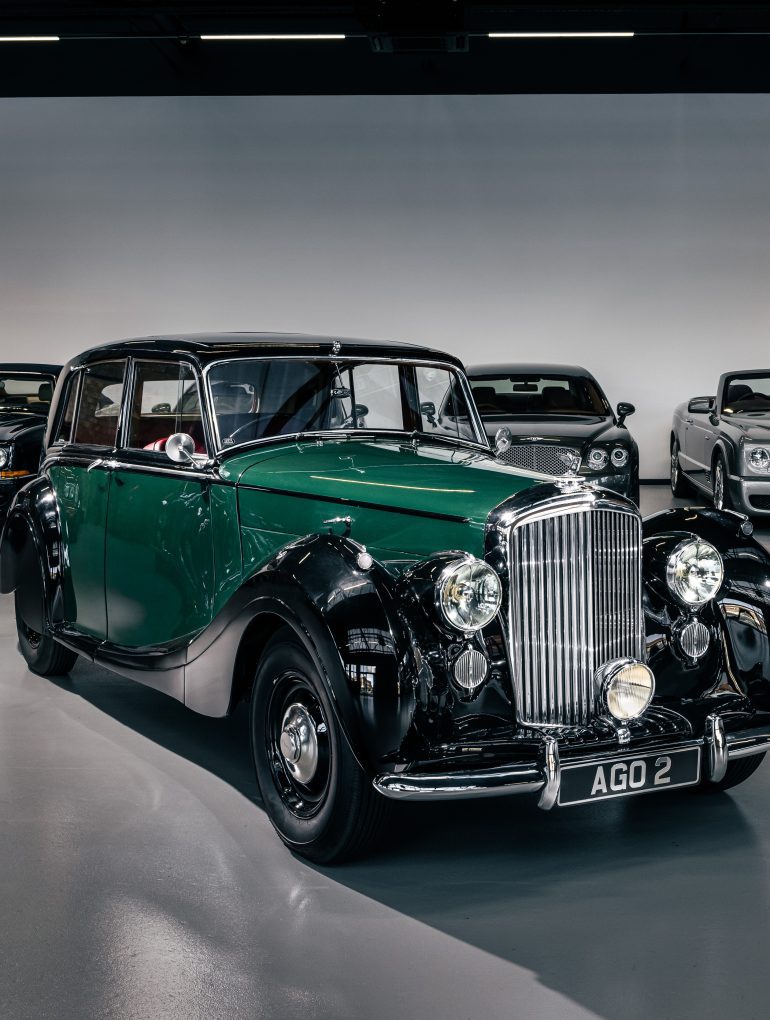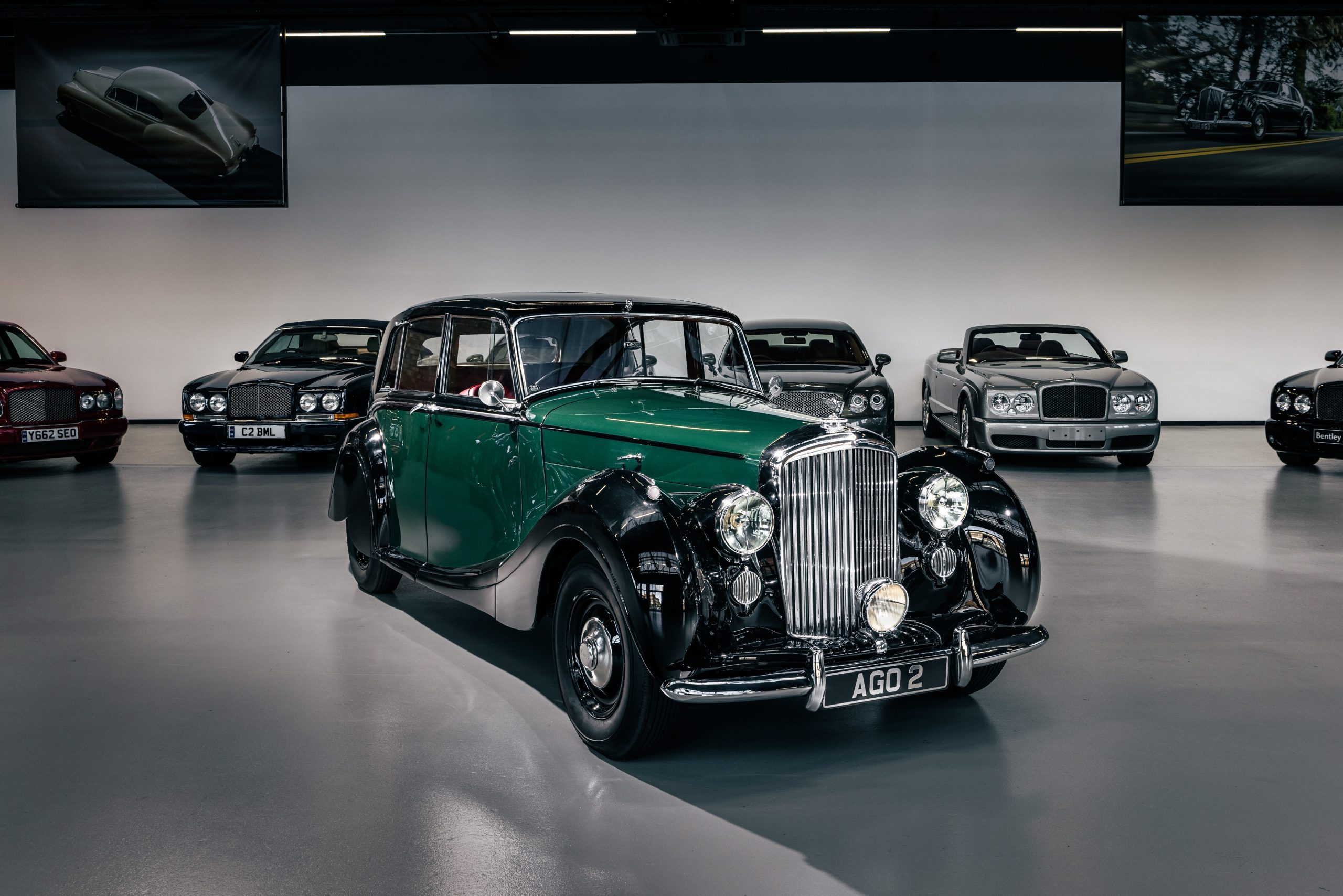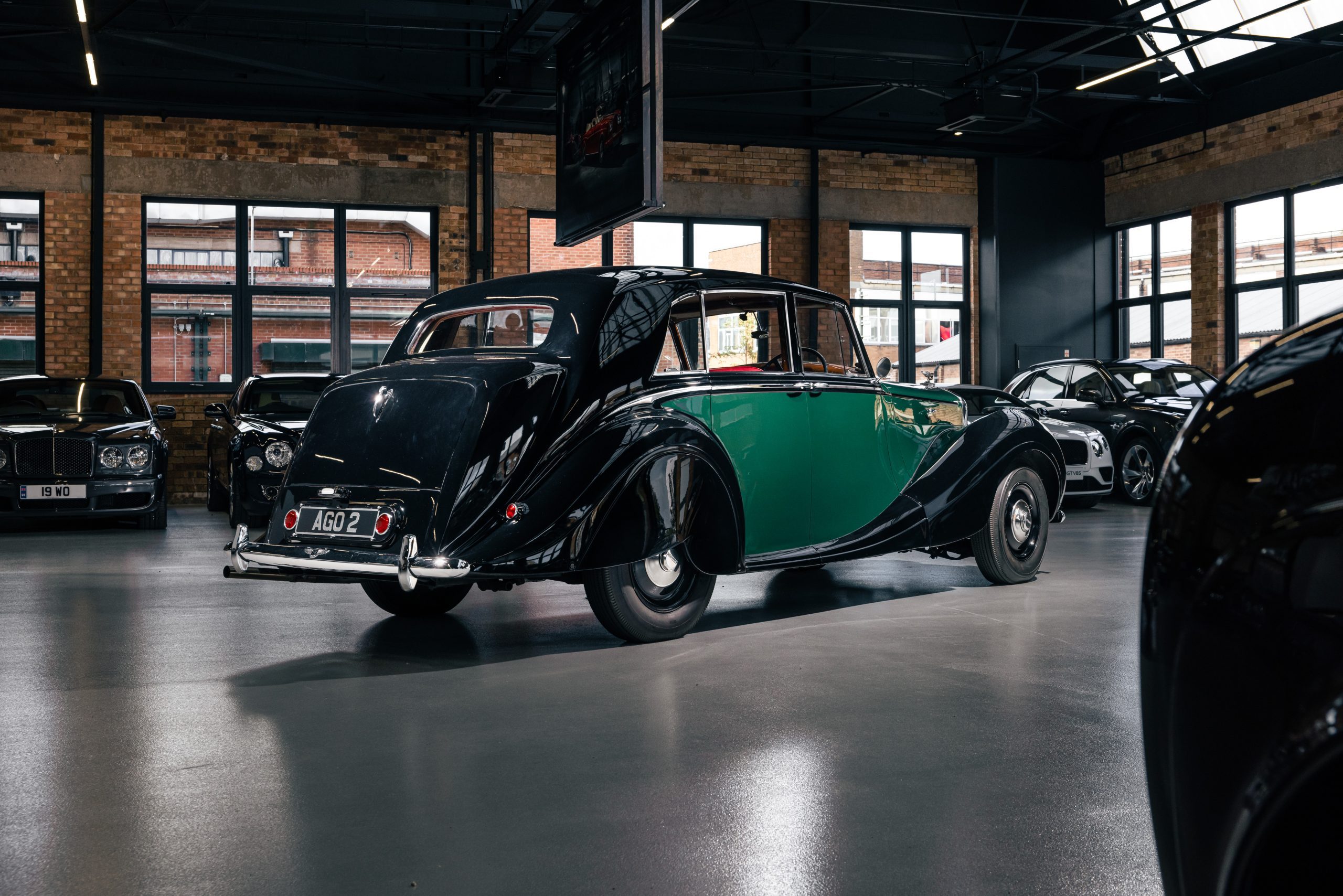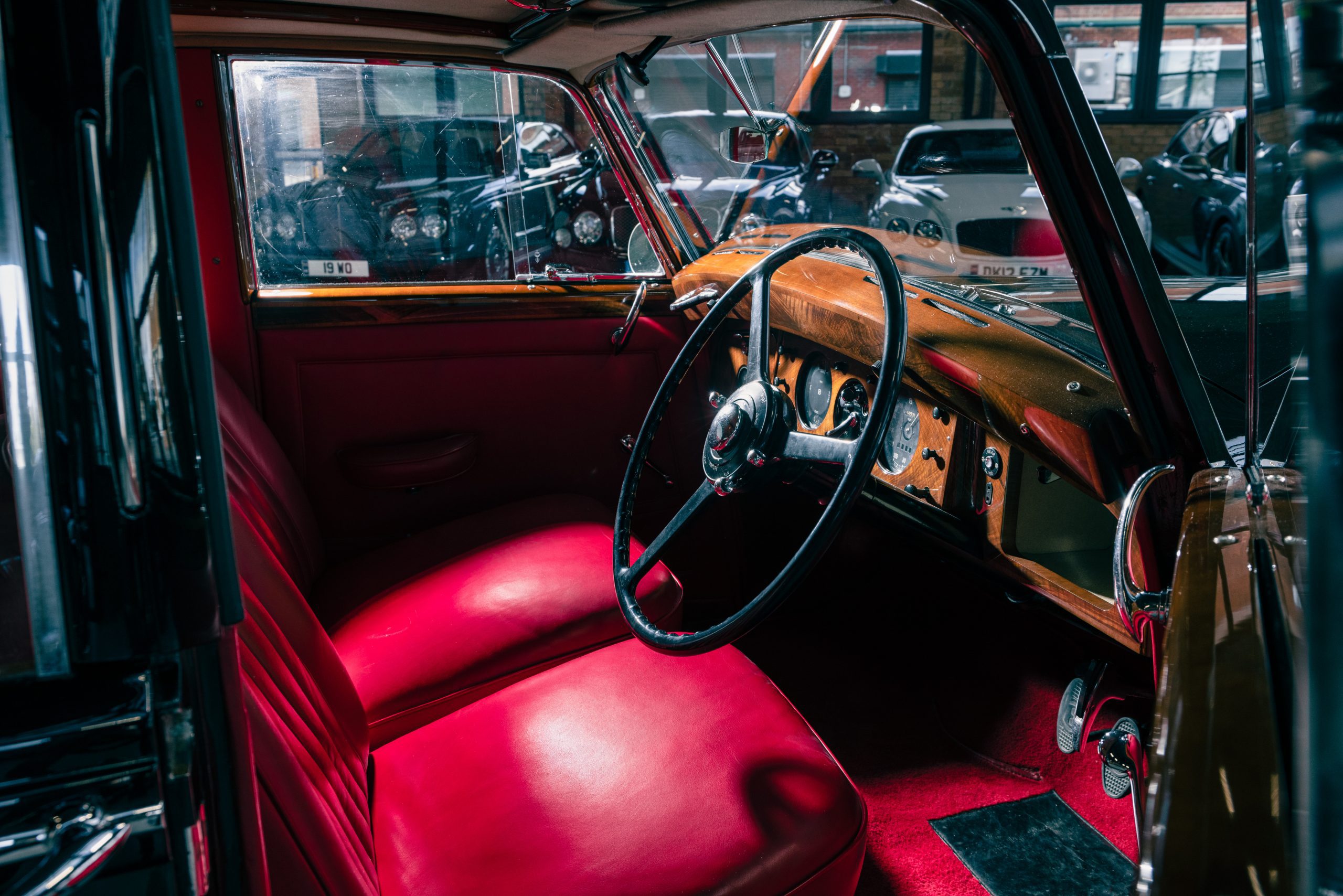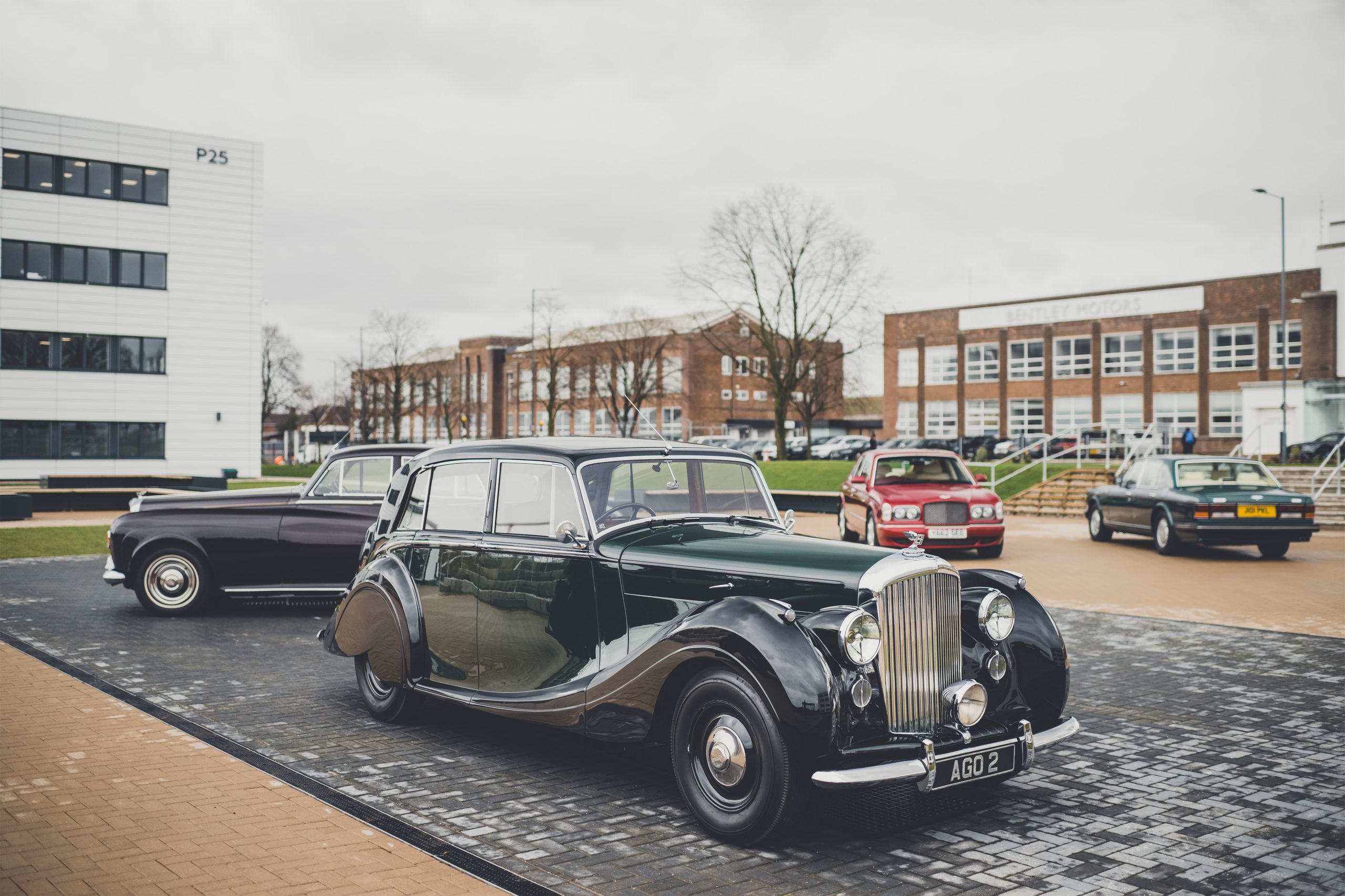Bentley Mark VI
The Bentley Mark VI was the first car produced at Crewe, the first Bentley of the post-war era and the most popular model Bentley had ever produced. The Heritage Collection Mark VI is one of 241 saloons created by coachbuilders H.J. Mulliner.
Restrained Design
Britain in 1946 was recovering from war and even those with money to spend preferred not to appear ostentatious. The Bentley Mark VI was perfect for the age, being as well-engineered as the equivalent Rolls-Royce but more understated. Closely based on the pre-war Mark V, it was offered with a factory-built Standard Steel body designed by J.P. Blatchley, who later became Bentley’s first design chief at Crewe. Sales of the Mark VI far outstripped those of any pre-war Bentley, with 4,001 examples produced, of which 3,171 were Standard Steel models.
Engineered for Longevity
The Mark VI was powered by a six cylinder 4,257cc B60 engine. Longevity was exceptional, engineers aiming at 100,000 miles (161,000km) without major overhaul. The production chassis was ready in February 1946; there was a press announcement in May at the Royal Ascot Hotel, and a complete car was ready for sale by September. Interiors were modelled on the pre-war coachbuilt Bentleys; the Mark VI was elegant and roomy with Connolly hide upholstery, walnut veneer facia and door trim and Wilton pile carpet. A major innovation was an improved interior heater and demister.
The Heritage Collection Mk VI
Three out of four Mark VI Bentleys produced were Standard Steel Saloons with bodywork by Pressed Steel at Cowley, but coachbuilders continued to produce alternatives including coupés, open tourers and even estates throughout the life of the model. The two-tone green and black Mark VI in the Heritage Collection is one of 241 coachbuilt four-door, six light saloons created by H.J. Mulliner. It was delivered in January 1950 to its first owner, William Lount of Alabastine Co Ltd. Its subsequent history includes a spell in Switzerland. It joined the Heritage Collection 2021.
Specs & Details
| Date Produced | May 1946-1951 |
| Number Built | 3,171 Standard Steel saloons, 830 coachbuilt (H.J. Mulliner 241); total 4,001 |
| Body | 4-door, 5-seat saloon; weight 3,976 lb (1,804 kg) |
| Engine | 6-cylinders, 4,257cc. 2 pushrod overhead inlet and side exhaust valves; single helical fabric gear-driven camshaft; cast iron block, detachable aluminium cylinder head; 7-bearing crankshaft |
| Power | 132bhp (98.4kW) @ 4,500rpm |
| Transmission | Single dry plate clutch; 4-speed gearbox, right hand gate shift synchromesh 2,3,4; two-piece propeller shaft with needle roller universal joints and centre bearing; hypoid final drive |
| Chassis | Steel channel section x-braced riveted frame; pressed steel body; independent front suspension by coil springs, wishbones, anti-roll bar; rear suspension live axle with semi-elliptic gaitered leaf springs; double-acting lever arm dampers |
| Dimensions | Wheelbase 120 in (305 cm); track front 56.2 in (143 cm) rear 58 in (147 cm); length 191.5 in (486 cm); width 69 in (175 cm); height 64.5 in (163 cm) |
| Performance | Maximum speed 93 mph (149.3 kph) |


